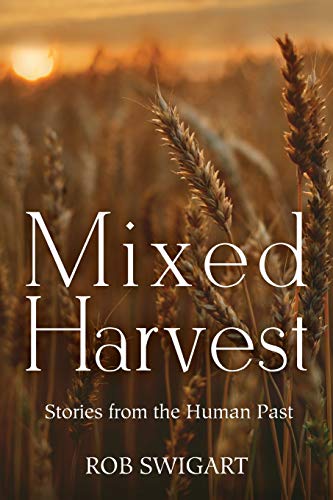Mixed Harvest: Stories from the Human Past
To a series of fictional vignettes beginning with a barely verbal hominid 300,000 years ago and ending with Lugal Ibbi-Sin’s fall in 1940 BCE Sumer, Rob Swigart adds paragraphs describing the archaeological record that lies beneath his construction. The fiction is hit and miss. Sometimes it works brilliantly, illustrating without the novelists’ bane of too much telling. Sometimes we long for the whole novel to expand on parts the brief glimpses. Sometimes the storytelling is not as engaging as it might be, and we wish the characters quickly gone to their fate.
Be warned, dark fates are the common lot of most of this humanity and almost-humanity.
The role of gathering in our early ancestors’ lives got short shrift, I thought, shadowed as usual by hunting. I was pleased, however, to see newly discovered Göbekli Tepe included in this march of history. Çatal Hüyük gets several vignettes. Here is one site where we’d like the novel, to understand more how the uncommon design of the settlement worked in people’s lives. Also, because Swigart is associated with the excavation project as resident novelist.
The factual paragraphs are not just archaeologists’ dry reports, but from the beginning work to present Swigart’s thesis that human “progress” is debatable. In fact, the harvests of the invention of agriculture are “mixed” at best, entrapping humans first in that unsustainable economy and then that of cities. I read the physical remains the same way and cannot complain to see more evidence for my pessimistic belief system. Of course, “progress”-loving mass culture may condemn this as “counterintuitive,” and perhaps the reader with more rose-colored glasses may find the unflinching message cause to move to something more diverting.










